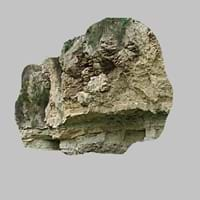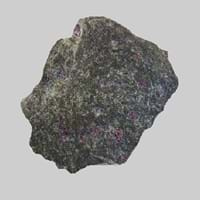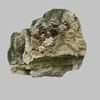Definition
A water-soluble mineral sediment resulting from concentration and crystallization by evaporation from an aqueous solution
Peridotite is a dense, coarse-grained plutonic is the main constituent of the earth's mantle
Origin
USA
Pike County, U.S
Discoverer
Usiglio
Unknown
Etymology
From a sediment left after the evaporation
From French, from peridot + -ite
Class
Sedimentary Rocks
Igneous Rocks
Sub-Class
Durable Rock, Soft Rock
Durable Rock, Medium Hardness Rock
Group
Not Applicable
Plutonic
Other Categories
Coarse Grained Rock, Fine Grained Rock, Medium Grained Rock, Opaque Rock
Coarse Grained Rock, Opaque Rock
Texture
Earthy
Phaneritic
Color
Colourless, Green, Grey, Silver, White
Dark Greenish - Grey
Durability
Durable
Durable
Appearance
Glassy, Vesicular and Foilated
Rough and Shiny
Interior Uses
Decorative Aggregates, Entryways, Flooring, Homes, Interior Decoration
Decorative Aggregates, Interior Decoration
Exterior Uses
As Building Stone, As Facing Stone, Garden Decoration, Paving Stone
As Building Stone, As Facing Stone, Garden Decoration
Other Architectural Uses
Curbing
Curbing
Construction Industry
As a Flux in the Production of Steel and Pig Iron, As a Sintering Agent in Steel Industry to process Iron Ore, As Dimension Stone, Cement Manufacture, for Road Aggregate, Making natural cement, Manufacture of Magnesium and Dolomite Refractories
As Dimension Stone, Cobblestones
Medical Industry
Taken as a Supplement for Calcium or Magnesium
Not Yet Used
Antiquity Uses
Artifacts
Monuments, Sculpture, Small Figurines
Commercial Uses
Used in the manufacture of Ceramic Powder, Used in the preparation of Sulfuric Acid and Silicon Diborite
Creating Artwork, Gemstone, Jewelry, Source of Chromite, Platinum, Nickel and Garnet, Source of Diamonds
Types
Not Available
Dunite, Wehrlite, Harzburgite, Lherzolite and Pyrolite
Features
Generally rough to touch, Splintery, Veined
Constitutes upper part of the Earth's mantle, Generally rough to touch, Host rock for Diamond, Is one of the oldest rock
Archaeological Significance
Monuments
Not Yet Used
Used
Famous Monuments
Not Applicable
Data Not Available
Sculpture
Not Yet Used
Used
Famous Sculptures
Not Applicable
Data Not Available
Figurines
Not Yet Used
Used
Formation
Evaporite is water-soluble mineral sediment which forms from concentration and crystallization by evaporation from an aqueous solution.
Peridotites can be formed in two ways: as mantle rocks formed during the accretion and differentiation of the Earth or as cumulate rocks formed by precipitation of olivine and pyroxenes from basaltic magmas.
Mineral Content
Calcite, Cancrinite, Gypsum, Kyanite, Magnetite
Amphibole, Chromite, Garnet, Magnesium, Olivine, Phlogopite, Plagioclase, Pyroxene
Compound Content
CaMg(CO3)2, CaO, Calcium Sulfate, KCl, MgO, NaCl
Ca, Fe, Mg, Potassium, Silicon Dioxide, Sodium, Titanium Dioxide
Types of Metamorphism
Burial Metamorphism, Cataclastic Metamorphism, Contact Metamorphism, Impact Metamorphism, Regional Metamorphism
Burial Metamorphism, Cataclastic Metamorphism, Contact Metamorphism, Hydrothermal Metamorphism, Impact Metamorphism, Regional Metamorphism
Types of Weathering
Not Applicable
Biological Weathering, Chemical Weathering, Mechanical Weathering
Types of Erosion
Not Applicable
Chemical Erosion
Grain Size
Medium to Fine Coarse Grained
Coarse Grained
Fracture
Conchoidal
Irregular
Porosity
Less Porous
Less Porous
Luster
Subvitreous to Dull
Shiny
Cleavage
Perfect
Imperfect
Toughness
Not Available
2.1
Specific Gravity
2.86-2.99
3-3.01
Transparency
Translucent
Translucent to Opaque
Density
2.8-2.9 g/cm3
3.1-3.4 g/cm3
Resistance
Heat Resistant, Pressure Resistant
Heat Resistant, Pressure Resistant, Wear Resistant
Deposits in Eastern Continents
Asia
Not Available
China, India, Indonesia, Kazakhstan, Russia, South Korea, Thailand, Turkey
Africa
Not Available
Morocco, South Africa
Europe
United Kingdom
Finland, France, Georgia, Germany, Great Britain, Italy, Kazakhstan, Netherlands, Norway, Spain, Switzerland, Venezuela
Others
Not Yet Found
Not Yet Found
Deposits in Western Continents
North America
USA
Canada, USA
South America
Colombia, Paraguay
Brazil
Deposits in Oceania Continent
Australia
Central Australia, Western Australia
New Zealand, Western Australia










